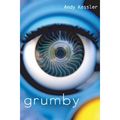 Over the past day, as our family made our way back from Buenos Aires, I read a new book called The Happiness Project
Over the past day, as our family made our way back from Buenos Aires, I read a new book called The Happiness Project . The author of The Happiness Project
. The author of The Happiness Project
is Gretchen Rubin and I met her last year (the one that ended yesterday) as she was finishing the book and building an audience for it on The Happiness Project blog.
It's a great time of year to read a book like this. I consider myself a very happy person. I love my job, I've got a great wife/partner in the Gotham Gal, my kids are wonderful, and I have been able to build a life where I can do most anything I want to do. And yet, I got many excellent ideas on how to be happy/happier from this book.
Basically Gretchen decides one day a few years ago that she could be happier. She undertakes six months of hard core research into happiness, then spends a year putting all that she learned into practice. And, of course, she comes away from that year a happier person.
I hope many of you choose to pick up this book
and read it. It took me less than a day of on and off reading to get through it so it's an easy read. Gretchen's an established author and she writes in a flowing easy way. You'll get lots of practical tidbits on things you can do to become a happier person.
The thing I liked most about the book are Gretchen's "Four Splendid Truths" which she discovers one by one throughout the year she practices happiness. Gretchen outlined them on her blog earlier this year and they are:
First Splendid Truth
To be happier, you have to think about feeling good, feeling bad, and feeling right, in an atmosphere of growth.
Second Splendid Truth
One of the best ways to make yourself happy is to make other people happy;
One of the best ways to make other people happy is to be happy yourself.
Third Splendid Truth
The days are long, but the years are short. (click the link to see my one-minute movie)
Fourth Splendid Truth
You’re not happy unless you think you’re happy.
corollary: You’re happy if you think you’re happy.
I can see myself adopting these, particularly the first two in my daily life. My dad once told our family that he realized that making my mom happy made him happy. I always like that advice and I am going to try to do it myself (my new year's resolution).
I'd like to end with a few words on Gretchen's adoption of blogging and social media during her happiness project. In the second month of her twelve month program, she decides to start a blog. It becomes the Happiness Project blog. She figures out how to set up a TypePad account, she decides to blog six days a week religiously, and she starts using Facebook and Twitter. That's how I met Gretchen. Her husband, who is featured prominently in the book and who I've known for a dedade, emailed me last summer and said "my wife Gretchen is getting totally into this social media stuff and I wonder if you might give her some advice". We met for lunch and I gave her a bunch of advice, but was impressed at how much she had already figured out on her own. My best contribution to her social media toolbox was Nathan Bowers, who redesigned my blog and hers last year. Like the old AVC, the Happiness Project blog had become cluttered with widgets and was in need of a facelift.
But regardless of how she used social media, it is featured prominently in the book. Every chapter after she starts blogging is filled with comments from her readers outlining the ways in which they adopt the core techniques differently than she did. It gives the book a completely different feel. Instead of reading about how Gretchen gets happier, you read about how lots of people get happier in their own words.
And she built an audience for the book in advance. I did some rudimentary web metrics yesterday afternoon and its hard to tell with blogs, but I believe the Happiness Project blog has about 2/3 of the monthly audience this blog has. That would put it somewhere around 75k to 100k readers every month. Her twitter has almost 14k followers and she has about 1,800 friends on Facebook.
And guess what? The book's been out a few days and is currently number 30 on Amazon's list of bestsellers and number 15 on Amazon's list of "hot new releases".
So let's all buy her book
, get a bit happier, and show that social media can put an author at the top of Amazon's bestseller list. That would be a great thing to see.



